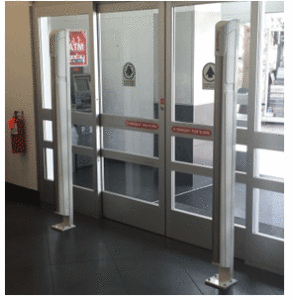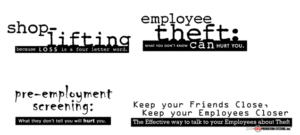 The amount of calls reported by Walmart stores to the local police are staggering. According to the Tampa Bay Times, Walmart stores in Tampa report an outstanding 16,800 calls in only one year and in only 4 counties. That’s 2 calls per hour, every hour, 24 hours a day. That’s your taxes working for Walmart. While the lack of police surveillance of other neighborhoods can affect those communities, Walmart monopolization of the police force should be analyze, and stopped for good.
The amount of calls reported by Walmart stores to the local police are staggering. According to the Tampa Bay Times, Walmart stores in Tampa report an outstanding 16,800 calls in only one year and in only 4 counties. That’s 2 calls per hour, every hour, 24 hours a day. That’s your taxes working for Walmart. While the lack of police surveillance of other neighborhoods can affect those communities, Walmart monopolization of the police force should be analyze, and stopped for good.
For more about this and other stories, follow the links below.
Retail Loss Prevention and Law Enforcement – Can They Work Together?
Law enforcement and LP should work together on retail theft prevention.
For years, there have been those that have questioned whether retail loss prevention and law enforcement can effectively work in partnership with one another. For example retail loss prevention professionals have often felt frustrated that law enforcement wasn’t concerned about helping them with their business. In reality, detectives may have been focusing on other pressing crimes, such as a rash of burglaries, sexual assaults, or other crimes against people.
Consider the aftermath of a “grab and run” incident. From a law enforcement perspective, the number of people who had access to a particular area when a loss occurs may be very high, with little or no available means to identify who the perpetrators might be. Some believe that law enforcement has the ability to further clarify and zoom in on video already recorded to extract a better image.
Walmart
Thousands of police calls.
You paid the bill.
Police come to shoo away panhandlers, referee parking disputes and check on foul-mouthed teenagers.
They are called to arrest the man who drinks a 98-cent iced tea without paying and capture the customer who joyrides on a motorized shopping cart.
The calls eat up hours of officers’ time. They all start at one place:
Walmart.
Law enforcement logged nearly 16,800 calls in one year to Walmarts in Pinellas, Hillsborough, Pasco and Hernando counties, according to a Tampa Bay Timesanalysis. That’s two calls an hour, every hour, every day.
Local Walmarts, on average, generated four times as many calls as nearby Targets, the Times found. Many individual supercenters attracted more calls than the much larger WestShore Plaza mall.
When it comes to calling the cops, Walmart is such an outlier compared with its competitors that experts criticized the corporate giant for shifting too much of its security burden onto taxpayers. Several local law enforcement officers also emphasized that all the hours spent at Walmart cut into how often they can patrol other neighborhoods and prevent other crimes.
N.C. law enforcement, retailers to combat organized retail crime.
CORCA is aimed at bringing together local law enforcement agencies and the N.C. Retail Merchants Association to better communication retail theft that is more complex than shoplifting.
At Thursday’s press conference, the alliance leaders stressed the difference between organized retail crime and shoplifting. Organized retail crime usually involves complex schemes and is organized to convert illegally obtained merchandise or cash into financial gain by theft or fraud.
“These are criminals,” Steve Walker, the asset protection director at Walgreens, said. “They are not shoplifters.”
Raleigh Police Department Detective Scott Womack added that often these thefts are connected to drug abuse, street crime and even terrorism.
 If you’re in retail management, and if you’ve been paying attention, you know your employees are the first line of defense against both internal and external fraud. Employees who are satisfied with their jobs are much more likely to care about co-worker and customer theft. They’re more vigilant and report it more often than those who are unhappy with their jobs.
If you’re in retail management, and if you’ve been paying attention, you know your employees are the first line of defense against both internal and external fraud. Employees who are satisfied with their jobs are much more likely to care about co-worker and customer theft. They’re more vigilant and report it more often than those who are unhappy with their jobs.
 Yep, you probably are! The shoplifter that walked out the door with your $45 item cost you MORE actual money than $45!
Yep, you probably are! The shoplifter that walked out the door with your $45 item cost you MORE actual money than $45! I’m sure you’ve already read how shoplifters cost you money. It’s probably hard to digest the dire financial implications that shoplifters have on all of our businesses. Without adequate controls in place, you are putting your business and your financial well-being at risk, and honestly, you just can’t do that. That’s why we have to have a camera system and why EAS systems are a necessity and not just a “nice to have” technology. That’s exactly why we have to invest in exception reporting tools to help us identify criminal activity and why we preach the value of exceptional customer service in our stores.
I’m sure you’ve already read how shoplifters cost you money. It’s probably hard to digest the dire financial implications that shoplifters have on all of our businesses. Without adequate controls in place, you are putting your business and your financial well-being at risk, and honestly, you just can’t do that. That’s why we have to have a camera system and why EAS systems are a necessity and not just a “nice to have” technology. That’s exactly why we have to invest in exception reporting tools to help us identify criminal activity and why we preach the value of exceptional customer service in our stores. You know, we talk about the thousands of ways you, the small business owner, loses money to thieves constantly. Most of that is centered on shoplifters and boosters stealing your merchandise. We talk about that for good reason… it’s one of the biggest financial impacts to your business if left unchecked. However, there are so many other ways that your business can be targeted by criminals and some of them may appear so legitimate, that you would have no idea you were a victim for weeks. In that time, the criminal is long gone and you’re left paying for that theft out of your pocket. One area of training that is often overlooked in retail is check fraud. I’ll give you some advice on how to identify this in your store and protect yourself from vulnerability.
You know, we talk about the thousands of ways you, the small business owner, loses money to thieves constantly. Most of that is centered on shoplifters and boosters stealing your merchandise. We talk about that for good reason… it’s one of the biggest financial impacts to your business if left unchecked. However, there are so many other ways that your business can be targeted by criminals and some of them may appear so legitimate, that you would have no idea you were a victim for weeks. In that time, the criminal is long gone and you’re left paying for that theft out of your pocket. One area of training that is often overlooked in retail is check fraud. I’ll give you some advice on how to identify this in your store and protect yourself from vulnerability. What is the solution to shoplifting and employee theft?
What is the solution to shoplifting and employee theft? Employee theft is a common and costly problem in retail. Some businesses’ are reporting that, for the first time, internal pilferage has now surpassed external. There are many ways to control and manage internal theft. But, one of the most effective ways is often overlooked. Stop it before it starts.
Employee theft is a common and costly problem in retail. Some businesses’ are reporting that, for the first time, internal pilferage has now surpassed external. There are many ways to control and manage internal theft. But, one of the most effective ways is often overlooked. Stop it before it starts. Do you REALLY know how to stop shoplifters? I mean, really know? Your Checkpoint System is only half of the strategy. You spent the money, put the labor/time into using labels and tags but after the newness wears off, are you still having more losses than you want?
Do you REALLY know how to stop shoplifters? I mean, really know? Your Checkpoint System is only half of the strategy. You spent the money, put the labor/time into using labels and tags but after the newness wears off, are you still having more losses than you want?
